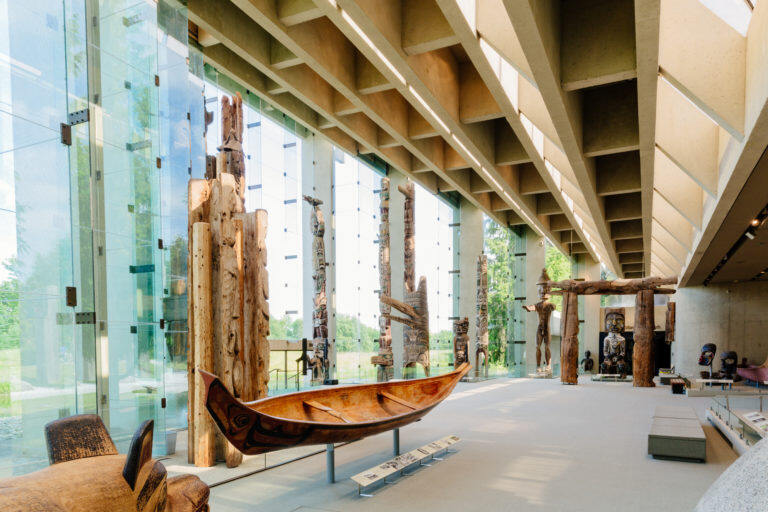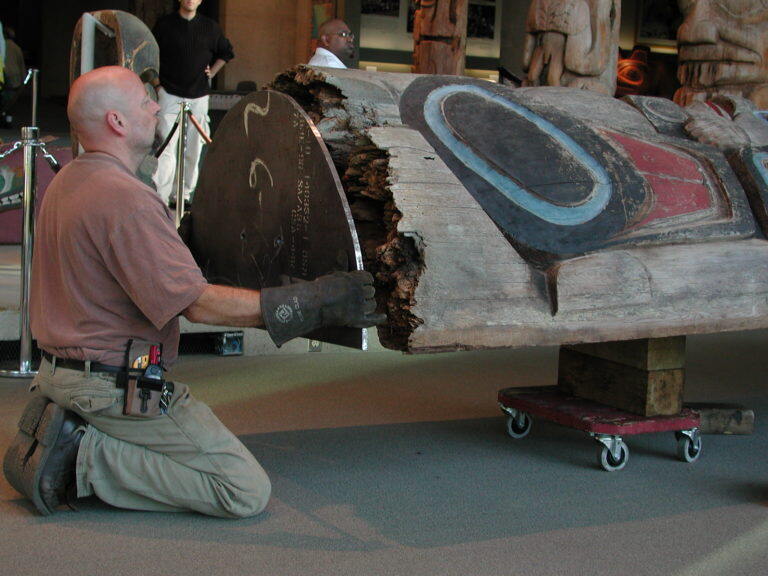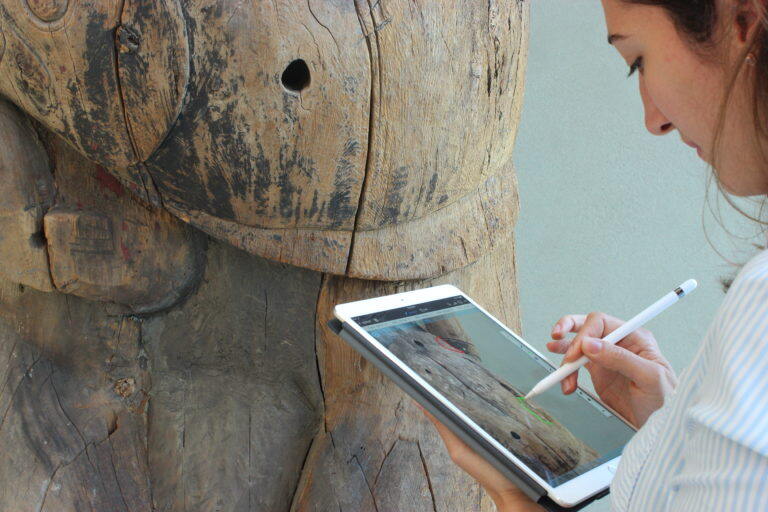Looking out through the panoramic windows of the Great Hall in the Museum of Anthropology (MOA), you can gaze across a bluff that was used for thousands of years as a lookout by the Musqueam people, on whose traditional, ancestral and unceded land the museum sits.
What you can’t see are the fault lines that lie beneath the land, and all along the coast of British Columbia.
Indigenous oral histories include tales of the megathrust earthquake that struck off B.C.’s west coast in 1700. Scientists don’t know when the next such quake will occur. They only know that it will.
“We’ve learned a lot about earthquakes since 1700, and we’ve learned a lot about structural engineering since the Great Hall was built back in the 1970s,” said Jennifer Sanguinetti, UBC’s managing director of infrastructure development. “We have to be vigilant in regularly evaluating the buildings on campus against this new knowledge. This is part of our seismic planning process that helps us prioritize upgrades and manage the risk posed by earthquakes.”


MOA has begun preparations for a rebuild of its iconic Great Hall that will upgrade the resiliency of the space and protect its irreplaceable collection in the event of a major earthquake
The museum, considered one of renowned Vancouver architect Arthur Erickson’s masterpieces, has captivated tourists and nurtured research and teaching since it opened in 1976. With a design inspired by the cedar post-and-beam construction of traditional west coast Indigenous villages, the Great Hall houses an extraordinary collection of massive carvings from northwest coast First Nations that have deepened visitors’ understanding of this land, its people, and their history.
The most recent round of UBC building evaluations, undertaken as part of a campus-wide seismic resilience plan, has identified the Great Hall as one of the spaces at greatest seismic risk. Based on simulations for major earthquake scenarios, the beloved Great Hall was quickly elevated on the university’s priority list for seismic upgrading.
The university essentially had two options: reinforce the Great Hall’s existing structure, or rebuild it completely. To reinforce the existing structure to today’s building standards would require significant modifications to its columns, plus the addition of new columns and brackets that were never part of Erickson’s vision. Alternatively, a complete rebuild of the Great Hall could retain the appearance of Erickson’s original design, preserving the clean lines and distinctive silhouette for which it is known.


For a space with the architectural heritage significance of the Great Hall, the university decided to rebuild.
It’s a huge undertaking, and one that calls for a sensitive approach given the heritage value of both the building and its site. The university met with the Arthur Erickson Foundation, which advocates for proper stewardship of Erickson’s legacy, and received feedback on its plan to extend the Great Hall’s future without compromising its architectural integrity. Representatives from the Musqueam Indian Band also participate in planning meetings and provide a critical cultural perspective for the project team to take into account. Indigenous communities and families whose cultural objects must be relocated elsewhere in the museum during construction are providing input into protocols around moving the objects and re-installing them after the Great Hall is rebuilt.
“For more than 40 years, the Museum of Anthropology has been one of Canada’s best-known buildings internationally, and its Great Hall one of Vancouver’s most iconic spaces,” says MOA director Anthony Shelton. “This seismic work is critical to preserving the integrity of this architectural gem. It also provides long-term safety for the cultural objects displayed within this space, ensuring the rich Indigenous knowledge and cultures represented in these objects are preserved for many generations to come.”
The first poles have been lowered and moved from the Great Hall to other parts of the museum. That work will continue in November over the course of a couple of weeks. In December, a temporary wall structure will go up between the Great Hall and the rest of the museum, closing the Great Hall to the public. Then the rebuild will begin in earnest. Construction is expected to progress throughout 2021, with the aim of re-opening the Great Hall in late 2022.


MOA will remain open during the seismic upgrades of the Great Hall. The Koerner European Ceramics Gallery, the Multiversity Galleries, the Elspeth McConnell Gallery of Northwest Coast Masterworks, and the Audain Gallery will feature popular exhibitions and displays of object collections, as always.
When the work is done, in additional to the seismic upgrades to the Great Hall, the museum will have new skylights and glazing, lighting, and an improved fire-detection system, but will look just as it does today: staggered layers of columns and beams, framing huge windows that reflect the greenery of the peninsula and the sky above the Salish Sea.
The most significant change will have happened underneath.
The seismic upgrades will be achieved using state-of-the-art base isolation technology. In this type of construction, the Great Hall will be placed over rubber or sliding bearings (known as base isolators) in between the foundation (footings) and the superstructure (columns and beams). As the ground shakes, the isolators will allow the building to move, taking up most of the energy and protecting the building’s structure.
MOA’s 70th anniversary celebrations on Sept. 14, 2019, included a presentation by the project design team. In addition, UBC Infrastructure Development and UBC Campus & Community Planning presented the plans at a virtual public open house on June 29, 2020. At both events, attendees had the opportunity to speak with the project and museum teams to learn more about this important reconstruction of the Great Hall.





































